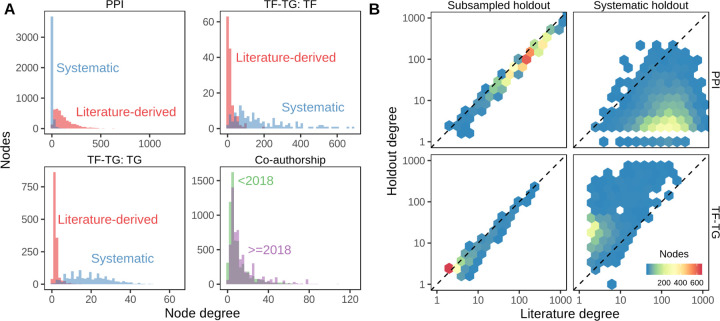Figure 4:
A. Degree distributions of networks with and without degree bias can be very different. Data on PPI and TF-TG were split between literature-derived and systematically-derived networks. In both cases, the networks exhibit large differences in degree distribution. Co-authorship relationship networks split by date of first co-authorship roughly share their degree distributions. B. Comparison of individual node degrees between different networks. Not only are the overall degree distributions different, but individual nodes can have systematically different degrees between two networks. Uniform random sampling produces linearly-correlated node degree, while non-random sampling produces non-correlated degree. Systematically-derived networks are not uniformly sampled from literature-derived networks or vice versa. 70% of literature edges were sampled with uniform probability for the “Subsampled holdout” network.

